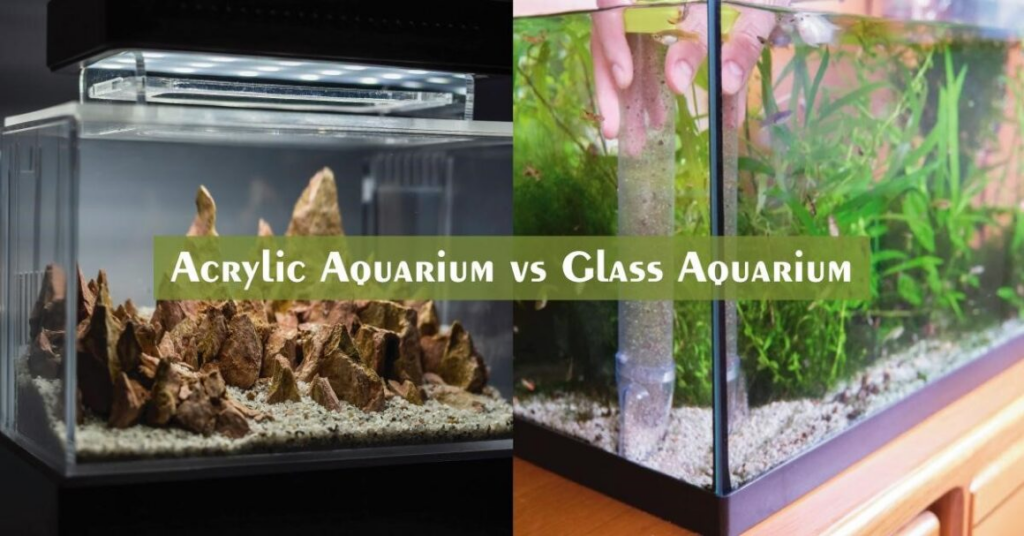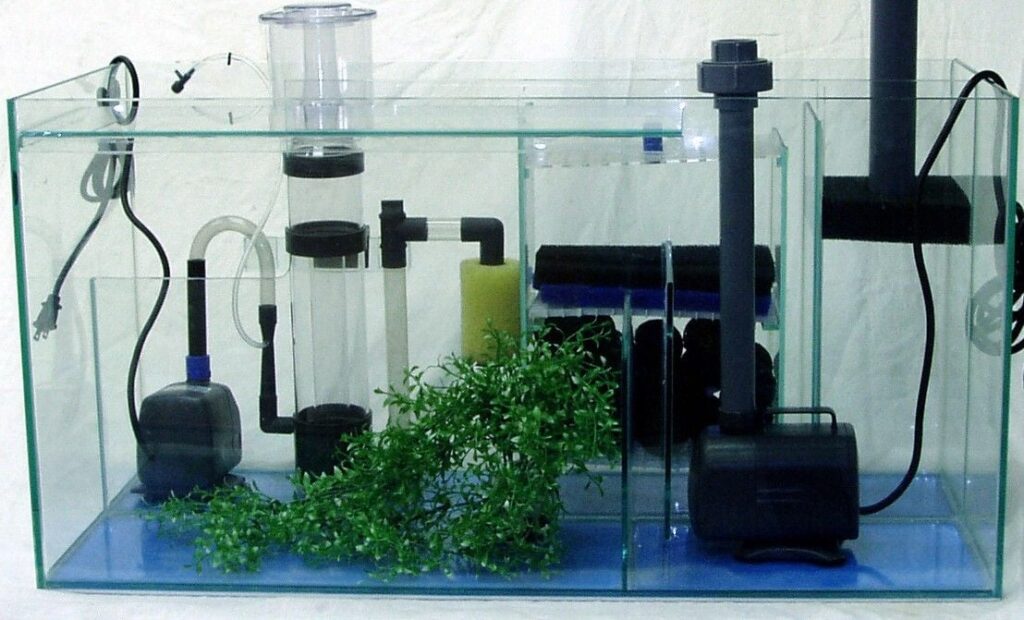A 10 gallon fish tank is a popular choice among fish enthusiasts, whether you are a beginner or an experienced hobbyist. It offers a compact size that can fit in most spaces, while still providing a suitable environment for a variety of aquatic species. But have you ever wondered how much a 10 gallon fish tank actually weighs? In this article, we will detail the factors that determine its weight and provide you with an estimation of its total weight.

Overview of a 10 Gallon Fish Tank
Before we dive into the weight aspect, let’s briefly discuss what a 10 gallon fish tank entails. As the name suggests, it has a capacity of 10 gallons, meaning it can hold approximately 38 liters of water. These tanks typically have dimensions of 20″ x 10″ x 12″, although there might be slight variations depending on the brand or manufacturer.
For more information on different tank sizes check out our Cheat Sheet to Fish Tank Gallon Sizes and Dimensions!
Importance of Knowing the Weight of a Fish Tank
Understanding the weight of your fish tank is crucial for several reasons. Firstly, it helps you determine whether your chosen location can support the weight of the tank.
Placing it on an unstable surface can lead to cracks, leaks, or even the tank collapsing, posing a risk to your aquatic pets and your home.
Secondly, knowing the weight of your fish tank assists in properly distributing the weight within your space, ensuring the safety and stability of your setup.
Factors Affecting the Weight of a 10 Gallon Fish Tank
The weight of a 10 gallon fish tank can vary depending on several factors:
Glass vs. Acrylic Tanks

The material of the tank itself plays a significant role in its weight. Glass tanks tend to be heavier than acrylic tanks, but they also offer more durability and scratch resistance.
Acrylic tanks, on the other hand, are lighter and have a higher impact resistance. The choice between the two materials ultimately depends on your preferences and needs.
Type and Thickness of the Tank Material
The thickness and quality of the tank material can affect its weight. Thicker glass or acrylic tanks provide more structural integrity but can also add extra pounds to the overall weight.
Accessories and Decorations Inside the Tank
Once you start adding accessories and decorations to your fish tank, such as filters, heaters, plants, and driftwood, the weight will increase accordingly.
These additional items bring a touch of beauty and functionality to your tank but should be taken into account when considering the overall weight.
Substrate and Water Content
The substrate, such as gravel or sand, can significantly contribute to the weight of your tank. Additionally, the water content itself is the primary weight component. Even without any decorations, a 10 gallon fish tank filled with water will weigh more than 75 pounds.

Estimating the Weight of an Empty 10 Gallon Fish Tank
To give you a better idea of the weight range of an empty 10 gallon fish tank, here are some estimations:
Average Weight Range for Glass and Acrylic Tanks
An empty glass tank usually weighs around 10-15 pounds, while an acrylic tank can weigh between 4-8 pounds. Remember that these are just average estimates, and the actual weight can vary depending on the tank’s construction and design.
Considerations for Different Tank Shapes
It’s worth noting that tanks with unconventional shapes or additional features, such as bowfront or rimless designs, may have slightly different weight distributions. Always refer to the manufacturer’s specifications for the most accurate weight information.
Adding the Weight of Water to a 10 Gallon Fish Tank
Now, let’s consider the weight of water in your 10 gallon fish tank. The calculation is based on the tank’s capacity:
Calculating Water Weight Based on the Tank’s Capacity
As mentioned earlier, a 10 gallon fish tank can hold approximately 38 liters of water. Each liter of water weighs about 2.2 pounds (1 kilogram). Therefore, the weight of the water alone in a 10 gallon tank would be approximately 83.6 pounds (38 kilograms).
Importance of Water Weight in Tank Stability
Water weight not only affects the overall weight of the tank but also impacts its stability. It’s essential to ensure that your stand or surface can adequately support the combined weight of the tank, decorations, and water to prevent any accidents or damage.
Additional Weight Considerations for a 10 Gallon Fish Tank
When estimating the total weight of your 10 gallon fish tank, it’s essential to account for the following factors:
Including Weight of Substrate, Rocks, and Decorations
The weight of your chosen substrate, rocks, and decorations can significantly impact the total weight of the tank. For example, gravel weighs approximately 1.5 pounds per liter, so a 10 gallon tank with 38 liters of gravel would add 57 pounds to the overall weight.
Considering the Weight of Equipment and Filtration System

Don’t forget to include the weight of equipment like filters, heaters, and lighting fixtures. These accessories are necessary for maintaining a healthy aquarium environment but can contribute to the overall weight.
Total Weight Estimation of a 10 Gallon Fish Tank
When all the components are taken into account, including the tank itself, water, substrate, rocks, decorations, and equipment, the total weight of a 10 gallon fish tank can range from approximately 150 to 225 pounds. It’s important to note that these numbers are general estimates, and factors like the specific setup and materials used can affect the final weight.
Can You Use a Cabinet Instead of a Stand for 10 Gallon Tanks?
Fish tanks weigh more when filled, and for small aquariums tank size is crucial. Cabinets can work, but ensure they support the full weight, unlike stands designed for large aquariums.
Using a cabinet for fish tanks, especially small aquariums like a 10 gallon aquarium, is a common alternative to an aquarium stand.
Ensure the cabinet can support the aquarium weight, including the empty weight and the added weight of water, substrate, live plants, and any decorations.
The tank’s volume and weight distribution must be considered to avoid stressing the structure. Pet stores often provide aquarium kit that include stands, but if you opt for a cabinet, ensure it is sturdy and level to prevent any accidents.
An air pump is essential to maintain water quality and keep your fish, such as betta fish, healthy.
Can You Keep a 10 Gallon Aquarium on the Floor?
Keeping a 10 gallon aquarium on the floor is not recommended. Fish tanks, even small ones, weigh significantly more when filled with water. The full weight of the tank can cause the floor to warp over time.
Additionally, placing the tank on the floor can lead to poor visibility and accessibility, making maintenance difficult. Elevated surfaces help maintain stable temperatures, which is crucial for the well-being of sick fish.
While larger tanks require more support, even a 10 gallon aquarium benefits from being placed on a stand or a stable piece of furniture that can support its weight and tank size.
Having a larger tank or large aquariums on the floor can further exacerbate these issues, making it important to consider how much space and support is needed for safe placement.
Conclusion
Knowing the weight of your 10 gallon fish tank is crucial when setting up your aquarium. It ensures the safety and stability of your tank, preventing potential accidents and damage to your aquatic pets and surroundings.
By considering factors such as the tank material, water weight, decorations, substrate, and equipment, you can estimate the total weight and make informed decisions when choosing a suitable location for your tank.
Remember to always refer to the manufacturer’s specifications for accurate weight information and seek professional advice if needed.


